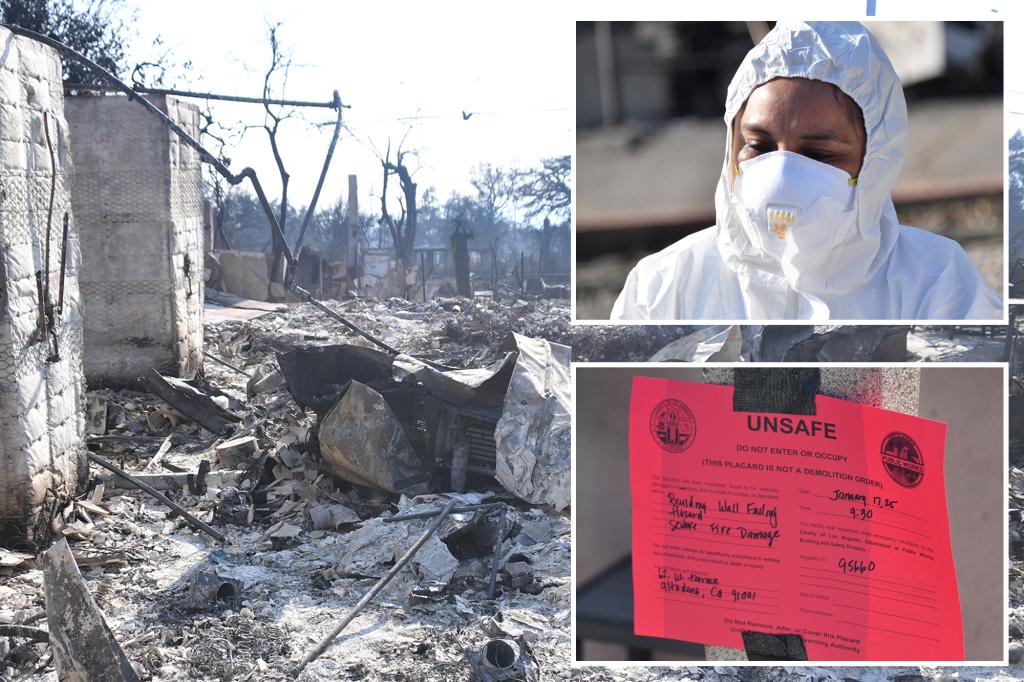Miriam Cotero, a 46-year-old Costco worker residing in Altadena, California, found herself in a dire predicament following the devastating Eaton Fire that swept through her neighborhood in January 2024. She had recently completed a substantial renovation of her family home, transforming it from a modest one-bedroom, one-bathroom dwelling into a spacious three-bedroom, two-bathroom residence with an attached garage. The upgrade, financed through a refinanced mortgage, had elevated the property’s value to an estimated $1.2 million, with an outstanding loan balance of $800,000. Tragically, the wildfire consumed the newly renovated house, reducing it to ashes and leaving Cotero facing a staggering financial burden.
The heart of Cotero’s dilemma lay in the disparity between her property’s increased value and the coverage provided by her existing homeowner’s insurance policy. While she had insurance, it had not been updated to reflect the significant improvements made to the house. Consequently, the policy covered only $200,000, leaving a gaping $600,000 shortfall between the insured amount and the outstanding mortgage. This left Cotero grappling with a $6,000 monthly mortgage payment for a home that no longer existed, a stark illustration of the precarious position faced by many homeowners in California’s volatile real estate market.
Cotero’s story exemplifies the challenges faced by homeowners in California, where escalating property values, coupled with the increasing frequency and intensity of wildfires, have created a perfect storm of risk. The rapid appreciation of home values often makes it difficult for homeowners to relocate, tying them to properties that have become significantly more valuable than their initial purchase price. This increased value, however, necessitates higher insurance coverage, which can be prohibitively expensive or even unavailable in high-risk fire zones. Many insurance companies have withdrawn from the California market, leaving homeowners with fewer options and potentially inadequate coverage in the face of catastrophic events like wildfires.
Adding to the complexity of the situation, Cotero and her family, comprising three children, her partner, and a granddaughter, were left homeless after the fire. They initially sought refuge in a hotel, but with their stay coming to an end, the looming question of where to go next weighed heavily on their minds. The search for alternative housing was further complicated by their desire to remain within the same school district, allowing Cotero’s eldest son to complete his senior year at Pasadena High School without disruption. This constraint placed them squarely in the crosshairs of Los Angeles’s exorbitant rental market, adding another layer of financial strain to their already precarious situation.
While Cotero’s insurance policy provided $44,000 for temporary housing, this amount was a mere drop in the bucket compared to the long-term costs they faced. Rebuilding their home was estimated to take at least two years, during which time they would still be responsible for the hefty mortgage payments. Even with the possibility of a temporary reprieve from mortgage payments, a common practice by lenders in the aftermath of natural disasters, the prospect of covering the substantial loan without adequate insurance loomed large. The $44,000 allocated for rent paled in comparison to the combined costs of rent, mortgage payments, and the eventual rebuilding process, highlighting the inadequacy of their insurance coverage in the face of such a devastating loss.
Cotero’s experience underscores the critical need for homeowners to regularly review and update their insurance policies, especially in regions prone to natural disasters. The rapid appreciation of property values in California necessitates a corresponding increase in insurance coverage to ensure adequate protection in the event of a catastrophic loss. Furthermore, the increasing frequency and severity of wildfires underscore the importance of proactive measures, such as creating defensible space around homes and having a comprehensive evacuation plan in place. The combination of escalating property values, a volatile insurance market, and the ever-present threat of natural disasters has created a complex and challenging landscape for homeowners in California, emphasizing the critical importance of preparedness and adequate insurance coverage.

